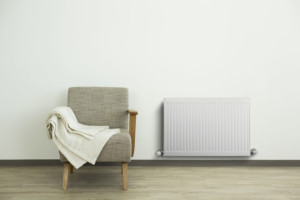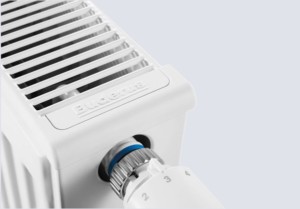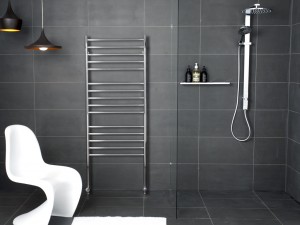What Is Hydronic Heating?
Hydronic heating systems use water to move heat from a sources such as gas boilers or heat pumps through piping to each room. It’s often installed in concrete slabs, secondary topping slabs, radiator panels & hydronic towel rails. Hydronic heating is a cost-effective form of in-home heating that combines smart energy with innovative technology to produce the most efficient heating system.


How Does Hydronic Heating Work?
Water is heated in a boiler and then distributed quickly around the house through piping in the walls. It then travels into panel radiators which are installed in each room and then transferred out into the air spreading evenly around the room. Or in the case of floor heating the water is distributed around coils of piping under a concrete slab which then heats the whole surface area.
The boilers may be fuelled by a variety of sources including gas, electricity, wood, biofuels. Boilers with low-water content are the most efficient. No matter what your local fuel source is, there will be a boiler that is suitable for your home.
Radiators also come in a diverse range of styles and materials, from the traditional steel panels, to the latest aluminium or cast iron designer panels. At Fosters we have an extensive range of designer radiators offering elegant and unique shapes, size and materials to suit any space.
Hydronic heating offers a large array of design choices to accommodate different buildings types, sizes, and individual taste, needs, usage, and budget. Systems can be installed easily into new or existing houses with full or partial installation of homes available.
The Benefits of Hydronic Heating
Hydronic Heating Increases Comfort
Hydronic heating distributes even heat with balanced air moisture and avoids uncomfortable hot spots, warm draughts, or smells. Hydronic systems also enable you to personalize your heating requirements and they operate silently allowing you to enjoy the comfort of your home.
Hydronic Heating is Good for Your Health
Hydronic heating produces a gentle, hygienic, pleasant form of heat. Many common heating systems circulate airborne contaminants, allergens, and dust around homes and buildings. Forced air heating (wall and central heating) also dry out the air which can affect our skin, eyes, sinuses and throats.
Hydronic heating is also referred to as radiant heating, although radiant heating can use either electricity or hydronic systems. Radiant heating is based on the principle of radiant energy which transfers heat from a source to an object, just like heat from the sun. By mimicking nature, hydronic heating produces improved air quality and healthier homes.
Hydronic Heating is Efficient
There is a number of reasons why hydronic heating is the most efficient system to operate. Firstly, water is a better conductor of heat than air, so heat is transferred with great ease around spaces. Secondly hydronic heating evenly distributes heat, unlike other forms of heating where there is always one part of the room that is warmer than the rest. With forced air heating units and systems, the warmest air gathers around the ceiling and with traditional wood heaters heat escapes out the chimney. Radiant heat does not increase the air pressure so it prevents warm air being pushed out through cracks and small cavities in the home. This also makes hydronic heating the most effective system for homes with high-ceilings. Due to the even heat distribution, rooms can be kept at lower temperatures which means less energy is consumed.
Modern hydronic heating systems also enables you to control the temperature of each area with a thermostat so they can be adjusted according to which rooms are occupied and individual needs. For example bedrooms can be maintained at lower heating to communal living areas. This minimizes heat loss and energy consumption which means lower environmental impact and power bills.
Hydronic heating is also used in universities, schools, nursing homes, hospitals, airports and many other public and commercial buildings as it’s the most efficient and effective heating system to operate and it also has very low maintenance costs.




